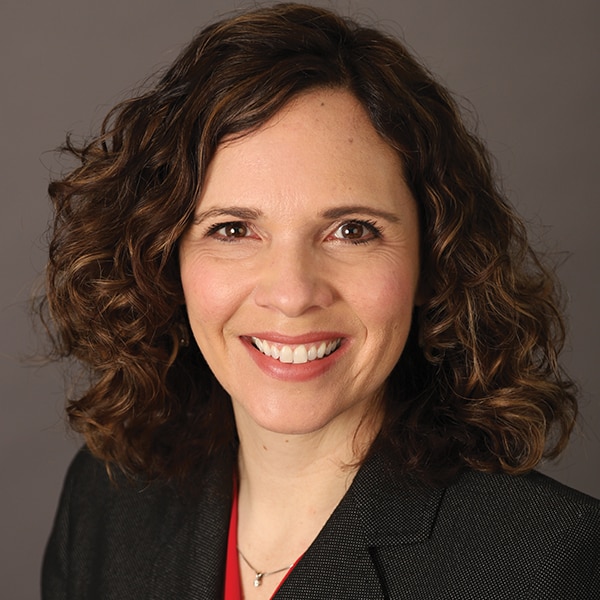Map Your Retirement Years: Navigate the Go-Go, Slow-Go, and No-Go Phases

The Key Wealth Institute is a team of highly experienced professionals representing various disciplines within wealth management who are dedicated to delivering timely insights and practical advice. From strategies designed to better manage your wealth, to guidance to help you better understand the world impacting your wealth, Key Wealth Institute provides proactive insights needed to navigate your financial journey.
Retirement often consists of three phases with a different desired lifestyle for each: the Go-Go years, the Slow-Go years, and the No-Go years.
We don’t know exactly how long each of these phases will last, but planning for retirement should factor in the spending needed to support your desired lifestyle at each phase. Once you see the connection between your spending priorities and the future growth of your estate, you can see what you may have left at the end of your projected lifetime and make informed wealth transfer decisions.
This article discusses the spending considerations during these phases. Then, we look at how your spending priorities affect your estate and how you can align any potentially excess assets with aspirational and legacy planning goals without disrupting your retirement needs.
The Go-Go Years
The Go-Go years are often the first 10 years or so of retirement. You finally have the time and freedom to tackle many of the pursuits you didn’t necessarily have time for while raising a family, building your business, or advancing toward your career goals.
Generally, during the Go-Go years, you are in good health and have lots of energy to tackle the newfound freedom that comes with turning the page to a long-anticipated retirement date. You worked hard and have stable finances that you may not have experienced when you were younger. During these years, your dreams may be filled with hobbies, travel, volunteering, leisure and active adventures, and family.
When creating a budget for this period of life, you need to factor in the additional costs that accompany heightened travel and leisure goals.
The Slow-Go Years
As you age and enter the Slow-Go years, your body and mind slow down. You may not be able to keep up the same pace that you did earlier in retirement. You may be content to spend more time with loved ones than picking up a new sport. You may trade in international travel for more modest activities and fun closer to home. You may become more engaged with those around you in new activities. During this time, you may naturally start to spend less money due to your change of pace and chosen activities.
The No-Go Years
Retirees today are living longer and having more active retirements than ever. The No-Go years of retirement will depend on your level of health as you age, but you’ll see another slowdown during this phase. Some can age in place and others will need additional help. Budgeting for healthcare costs and planning appropriately is critical at this phase.
Spending During the Three Phases of Retirement
Planning for retirement should factor in the spending you need to support your desired lifestyle at each phase of retirement. Assessment of spending rates is often overlooked in planning. Failure to align spending rates with changing goals can lead to decisions that don’t align with your financial reality. In addition, when wealthy families — and, subsequently, their advisors — don’t understand their evolving annual spending needs, important wealth planning opportunities can be overlooked.
Here are some steps to better understand how much you anticipate spending:
- Regularly review your budget and expenses and discuss with your advisor. Review fixed and discretionary expenses and identify upcoming major expenditures such as property purchases or investments. Regular review of this information will give the advisor a clear picture of your cash flow and allow them to plan for these liquidity events in a tax-efficient manner. Fixed-income sources, like Social Security and pensions, will meet some of these needs. Some likely will need to come from investment assets, whether those are retirement assets by way of required minimum distributions (RMDs) or additional distributions, taxable assets, or some combination.
- Be prepared to adjust as circumstances and needs change. Maintain an open line of communication with your advisor as your cash flow needs change or major expenses arise. As your phase of retirement changes, the cash flow you need will likely change as well.
- Finally, use cash-flow conversations with your advisor to facilitate estate and tax planning.
Where can we go from here? With a clear understanding and incorporation of spending priorities, advisors for high-net-worth and ultra-high-net-worth families can help them take advantage of planning opportunities in an active manner.
Understanding Spending and Impact on Future Wealth Transfer
There is a clear connection between your spending rate and the growth of your estate. By understanding your spending needs and using current assumptions for growth and inflation, your advisors can project your wealth values into the future and to the end of your projected lifetime.
This information can be used to carve out funds that are never likely to be spent in your lifetime and align these assets with aspirational and legacy planning goals in a proactive and efficient manner without disrupting your needs. This is essential in long-term tax and estate planning. Often a more meaningful projection includes how much you can give while you’re living, so you can enjoy and experience the benefits of giving to family and causes important to you.
Current backdrop
The Tax Cuts and Jobs Act of 2017 tax provisions are set to sunset after December 31, 2025, if Congress does not act before then. This law more than doubled the lifetime estate tax exemption, which in 2025 is $13.99 million per individual and $27.98 million for married couples. Without Congressional action, the exemption will revert to the pre-TCJA amount of $5 million indexed for inflation (approximately $7 million per individual, or $14 million for married couples). In addition, the maximum gift and estate tax rate is set to increase from 40% to 45% in 2026. This provides a potential deadline to take advantage of some unique planning opportunities.
How can you redeploy these carved-out funds identified as excess in your cash flow planning and take advantage of today’s favorable tax environment? Here are just a few ideas:
Maximize current living gifts
You can make significant gifts now and take advantage of higher gift tax exemptions. This way, you are taking advantage of both the annual gift tax exemption and the lifetime gift tax exemption. Some examples:
- Outright gifts
In 2025, the annual gift tax limit is $19,000, ($38,000 for married couples). Gifts can be given to as many individuals as you wish. If you stay under that limit, you won’t pay any gift tax or use up any of your lifetime exemption. Larger gifts would be counted toward your lifetime exemption. - Gifts in Trust
These gifts can provide guardrails for your heirs by creating a disciplined approach for using the funds. Additionally, they provide protection from divorce or creditors. An irrevocable gift and its growth would be removed from your taxable estate. - Gifts to an irrevocable life insurance trust (ILIT)
This type of trust holds life insurance outside your estate. It is generally funded by annual gifts. An ILIT provides liquidity to your heirs and helps avoid a forced liquidation of assets while minimizing gift and estate taxes. - Gifts to a spousal lifetime access trust (SLAT)
A SLAT is an irrevocable trust to benefit your spouse and your children that is funded during your lifetime. When assets are gifted to a SLAT, the gift and any future appreciation on such assets are removed from your taxable estate and your spouse’s taxable estate.
Be strategic about charitable intentions
If you would like to give to your favorite cause while you can see the money put to good use, discuss with your advisor how to maximize your gift to align with your specific plan.
- Use qualified charitable distributions (QCDs) for charitable gifts. If you are older than 70½, this satisfies your RMD, and you do not include the distribution (up to $108,000 in 2025) as income.
- Fund a donor-advised fund with appreciated stock. You can transfer assets to the fund to benefit your chosen charities and receive an immediate charitable deduction subject to AGI limitations. You have the flexibility to choose the timing of the grants and which charities will receive funds.
- Set up a private family foundation. A foundation allows wealthy families to achieve their philanthropic goals in a tax-efficient manner (offering income and estate tax savings) while engaging their family members in the process. A foundation can last for future generations, promoting a legacy of philanthropy.
Make Roth conversions
This can be effective if you feel that your tax rate may stay the same or increase in the future because of large required minimum distributions on super-sized retirement accounts. You may not need the amount converted and this can leave an income-tax-free bucket of money for your heirs for gift and estate planning purposes. This may mean higher taxes today, but in a rising tax environment, lower overall taxes for you in the future and none to your heirs when they inherit your Roth.
Fund education for children or grandchildren
- Frontload or superfund 529 plans. Current rules allow married couples to contribute $190,000 or $95,000 per individual, but it is treated as though these gifts were spread over five years.
- If your grandchildren are already entering school, you may pay tuition directly to the college. Tuition payments made directly to the college aren’t considered taxable gifts regardless of the size of the payment. Payments can only be made for tuition; housing, food, books, and fees do not qualify. This method still frees you up to give your grandchild a separate tax-free gift for the year, up to the $19,000 limit ($38,000 for couples).
Summary
It’s important to understand your spending needs and goals, now and in the future, to plan for a successful retirement. This awareness allows you and your financial advisor to create a road map that navigates the different phases of retirement — Go-Go, Slow-Go, and No-Go — and ensures a smooth transition into wealth transfer. By understanding your spending habits and how they affect your estate, you can maximize your legacy, optimize tax efficiency, and prepare for the future, all while enjoying your life today.
For more information, please contact your advisor.

About Jodi Watson
As a Wealth Planner for Key Private Bank, Jodi offers sophisticated financial planning advice designing holistic and comprehensive wealth plans and partnering closely with your relationship team. Jodi assists in coordinating the implementation of wealth management strategies and ensures clients have the tools and information to keep track of their financial situation and make informed decisions. She also synchronizes regular communications and updates with the team and proactively delivers the latest insights and advice to benefit each client’s unique wealth plan. Jodi joined KeyBank in 2011 and has over 20 years of experience in the financial services industry working with high-net-worth clients in various capacities. Jodi earned a BA from Bates College and also holds the Certified Financial Planner™ (CFP®) designation. Jodi is a member of the Maine Estate Planning Council and The Investments & Wealth Institute.